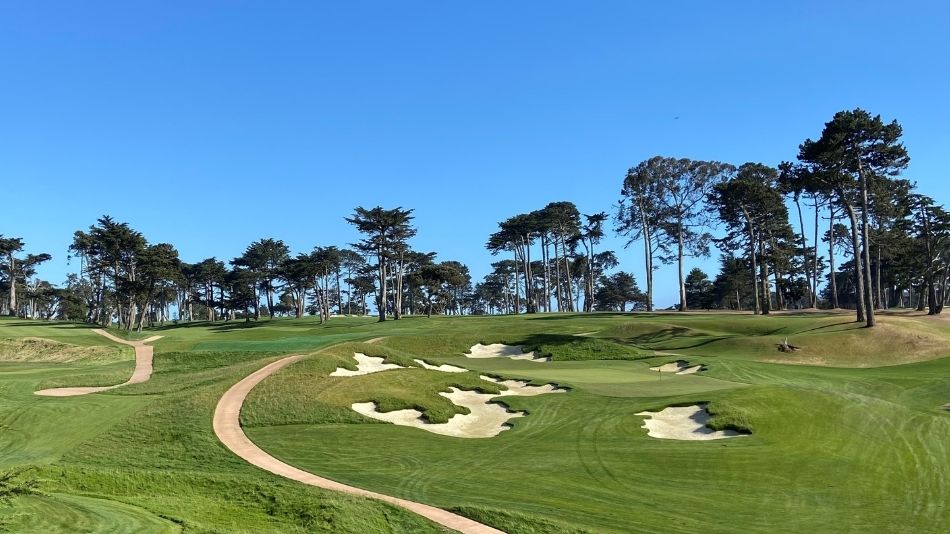Lake Merced Golf Club in San Francisco, California, will reopen its golf course in October following an Alister MacKenzie-inspired renovation by Gil Hanse, ASGCA.
Golf Course Architecture reports:
Willie Lock is attributed for designing Lake Merced’s first course in 1922, with MacKenzie putting his stamp on the layout in the late 1920s. In the 1960s, the construction of Interstate 280 resulted in the club losing portions of its property, with Lake Merced relocating its clubhouse from the north end of the property to the southeast corner. A rerouting was completed by Robert Muir Graves that saw the creation of several new holes.
Hanse and Jim Wagner’s aim has been to complete a nuanced restoration and renovation by restoring many holes to how MacKenzie designed them, as well as creating several new ones with, as Wagner calls it, a “MacKenzie vibe”.
“It’s the size, scale, look and placement of the bunkering mainly,” said Wagner. “With edging that reminds a lot of people of cloud formations. But it’s also the way they sit in the landscape: down into the green, while some float above grade. When you put that look into a landscape with vegetation, like Cypress trees, it just screams MacKenzie. The greens here are actually sort of simple compared to some others, but they work well in this setting.”
The project began in October 2021, with Heritage Links handling construction. Seeding of the final four greens was completed on 15 June, with the club on track to reopen in mid-October.
In total, the project has included the rebuild of all 18 greens, rebunkering, the restoration and expansion of tees, the creation of a 36,000-square-foot Himalayas-style putting course, new short-game practice areas, a turf research nursery, relocating the practice facility and installing a two-wire irrigation system with HDPE piping.
“This job was a total blow up,” said Wagner. “The club wanted a restoration, and we did have great photography from the 1930s. At the first, fourth, fifth, tenth and thirteenth (pictured), for example, we were able to put the holes back as MacKenzie created them. But we couldn’t do that everywhere. The property had undergone too much radical change through the years.”
In addition to the restorative aspects of the project, Hanse and Wagner have substantially rerouted the course. “This is one of the reasons why people hire Gil and Jim: nothing is ever cookie-cutter with them,” said Oscar Rodriguez, vice president of Heritage Links. “They exhibit so much creativity in the field.
“We love working with Gil and Jim… we essentially take their vision and build it. We make it functional, from a sustainability standpoint, with the understanding that a superintendent will have to grow grass there and maintain it. The new practice range was moved to the north end of the property so members would always have a place to practice when we’re tearing up and growing in their golf course.”
Rodriguez reports that around 75,000 cubic yards of earth were moved at Lake Merced, with the total inflated by the creation of two new holes – the par-four tenth and par-three sixteenth.
“The sixteenth was an attempt to achieve that MacKenzie vibe,” said Wagner. “It plays over the beginning of a barranca, to a green on this little ridge that sits across the expanse. Very much like you would see at Pasatiempo. At the same time, that green is set right beside the green at thirteen, which is a hole we restored using great old photos that really showed everything, the unique green setting is tucked into that hillside. So, that was daunting, to create a new green in the MacKenzie style that sits beside a restored original.”

